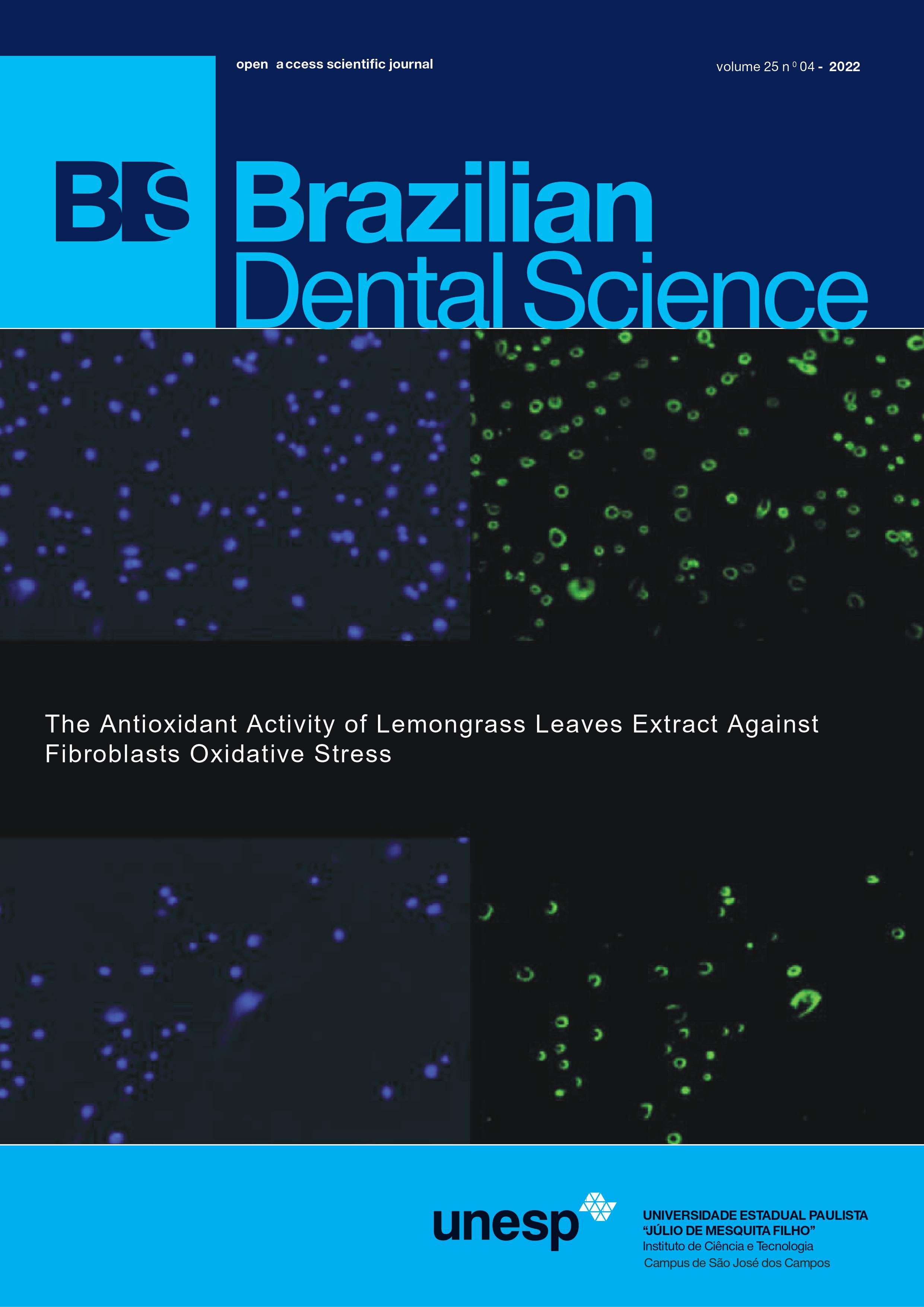Evaluation of temperature effect on cyclic fatigue resistance of nickeltitanium instruments in a double-curved canal: a comparative study
DOI:
https://doi.org/10.4322/bds.2022.e3591Abstract
Objective: To investigate the effect of room and body temperatures on cyclic fatigue resistance of three endodontic
nickel-titanium rotary files: Hyflex EDM (HEDM) (Coltene/Whaledent, Switzerland), WaveOne Gold (WOG)
(Dentsply Maillefer, Switzer), and EdgeOne Fire (EOF) (EdgeEndo, Albuquerque, New Mexico, USA) in a doublecurved
canal. Material and Methods: In this study, Sixty NiTi rotary files were used. These files were divided
into three groups (n = 20 for each group). Group A: HEDM (size 25, taper 0.08), group B: WOG (size 25, taper
0.07), and group C: EOF (size 25, taper 0.07). Each group was subdivided into two subgroups (n=10 for each
subgroup). One of the subgroup was subjected to cyclic fatigue test at room temperature (20±1°C), while the
other subgroup was subjected to cyclic fatigue test at body temperature (37±1°C). These files were tested by using
a custom-made artificial canal with a double curvature (coronal curve: 60° curvature with 5 mm radius; apical
curve: 70° curvature with 2 mm radius). All instruments were rotated according to the manufacturer instructions
until the fracture occurred by using electric endodontic motor (Wave One, Dentsply Maillefer, Ballaigues,
Switzerland). The number of cycles to fracture (NCF) and the fractured fragment length (FL) were recorded
for each endodontic file. The data were gathered and statistically analyzed using shapiro-wilk test and two-way
ANOVA test. The statistical significance was set at 0.05. Results: The NCF of WOG and EOF were significantly
lower at body temperature as compared to room temperature (p<-0.05), whereas no difference was observed
in NCF of HEDM at body and room temperatures (p>0.05). At 20±1°C, the results showed a non-significant
difference between NCF of WOG and EOF (p>0.05), while the NCF of HEDM was significantly lower than the
other groups (p<-0.05). At 37±1°C, the results showed a non-significant difference in NCF among the tested
endodontic files (p<-0.05). There is non-significant difference in FL of each group at (20±1°C) and (37±1°C)
(p>0.05). No statistical difference in FL among the tested files at room and body temperatures (p>0.05).
Conclusion: The temperature has a significant effect on cyclic fatigue resistance of EOF and WOG, whereas no
effect was observed on cyclic fatigue resistance of HEDM. WOG and EOF had a comparable NCF, while HEDM
had a lower NCF than other groups at room temperature. At body temperature, all tested files have a comparable
NCF. These results were attributed to the type of the alloy and heat treated that was used to manufacture these
endodontic files. The cyclic fatigue test should be done at body temperature.
KEYWORDS
Body temperature; Cyclic fatigue; EdgeOne fire; Hyflex EDM; WaveOne Gold.
Downloads
Downloads
Published
How to Cite
Issue
Section
License
Brazilian Dental Science uses the Creative Commons (CC-BY 4.0) license, thus preserving the integrity of articles in an open access environment. The journal allows the author to retain publishing rights without restrictions.
=================




























